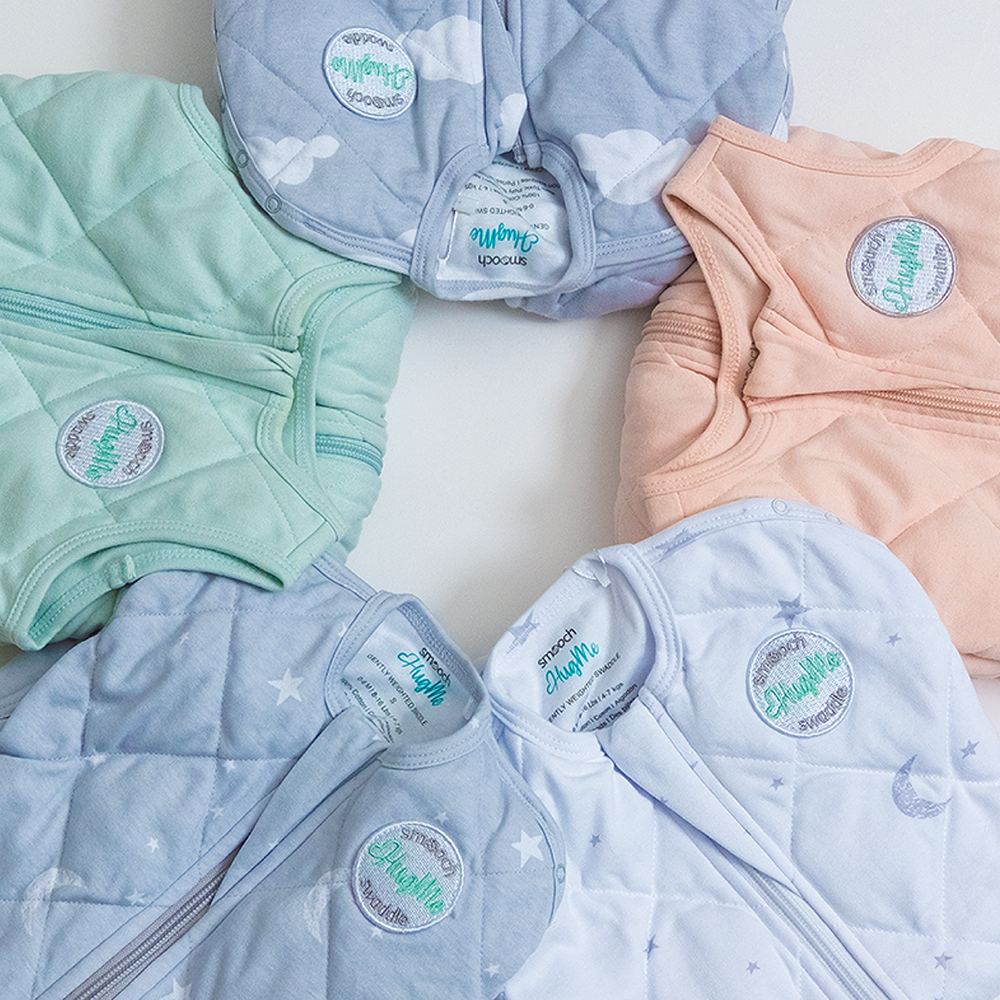The journey of parenthood is filled with discoveries and decisions, especially when it comes to ensuring your newborn's comfort and safety. One of the innovative solutions that have emerged in recent years is the weighted swaddle, a unique blend of traditional swaddling methods enhanced with the gentle pressure akin to a soothing hug. But what sets weighted swaddles apart from their traditional counterparts, and how can they benefit your little one?
In this comprehensive guide, we'll explore the ins and outs of weighted swaddles, from their design principles to the science that backs their effectiveness. By understanding these key elements, you can make an informed decision on whether a weighted swaddle is the right choice for your baby's sleep needs.
The Science Behind the Comfort: Understanding Deep Touch Pressure
The principle underlying weighted swaddles is Deep Touch Pressure (DTP), a therapeutic concept used in various medical and wellness fields. DTP involves applying gentle, even pressure across the body, akin to a firm hug, a massage, or swaddling. This pressure stimulates the production of serotonin, a neurotransmitter that promotes relaxation and mood stabilization, and leads to the release of melatonin, the hormone that signals it's time for sleep.
Weighted swaddles harness this principle by incorporating a distributed weight throughout the fabric, providing your baby with constant, gentle pressure. This innovative approach helps simulate the enveloping warmth and security of being held, which can be particularly comforting for newborns as they adapt to life outside the womb.
Unveiling the Benefits: How Weighted Swaddles Can Help Your Newborn
Integrating a weighted swaddle into your baby's bedtime routine can offer a multitude of benefits, not only for the infant but also for the entire family. Firstly, the swaddle's gentle pressure helps reduce the startle reflex, a common reason newborns wake up suddenly and cry. By minimizing these involuntary movements, weighted swaddles promote uninterrupted sleep, allowing your baby (and you) to enjoy longer periods of rest.
Moreover, the sense of security and comfort provided by the weighted swaddle can lead to faster sleep onset. Babies swaddled in this manner often experience less anxiety and can settle down more quickly, making bedtime a more peaceful and less stressful experience for everyone involved.
Selecting the Perfect Weighted Swaddle: Tips for New Parents
Choosing the right weighted swaddle for your baby is crucial for their comfort and safety. The ideal swaddle should match approximately 10% of your baby's body weight, ensuring the pressure is effective without being overwhelming. It's also essential to opt for swaddles made from breathable, hypoallergenic materials to keep your baby comfortable and prevent overheating.
Look for swaddles with adjustable features to accommodate your growing baby and ensure a snug fit. A well-fitting weighted swaddle should allow for natural movement of the hips and legs while keeping the arms securely wrapped. This balance is vital for promoting safe and healthy hip development.
Integrating Weighted Swaddles into Your Routine: A Step-by-Step Approach
Introducing any new element into your baby's routine requires patience and observation. Start by using the weighted swaddle during short naps when you can monitor your baby's response. Pay attention to their comfort, temperature, and overall disposition. This gradual introduction helps your baby acclimate to the new sensation while allowing you to assess their comfort and safety.
Once your baby seems comfortable with the weighted swaddle during naps, you can begin incorporating it into their nighttime routine. Consistency is key; using the swaddle as part of a regular bedtime ritual can help reinforce sleep cues and establish a stable sleep pattern. Remember, always place your baby on their back to sleep and ensure the swaddle is snug but not too tight.
Addressing Common Concerns: Safety and Effectiveness of Weighted Swaddles
As with any baby product, safety is a paramount concern for parents considering weighted swaddles. It's important to follow all usage guidelines provided by the manufacturer and consult with your pediatrician before introducing a weighted swaddle, especially if your baby has special health considerations.
When used correctly, weighted swaddles are a safe and effective tool for enhancing your baby's sleep. Ensure the swaddle is certified by relevant child safety organizations and regularly check the product for any signs of wear and tear to maintain a safe sleeping environment.
Embracing the Future of Swaddling: A Conclusion for Modern Parents
The advent of weighted swaddles represents a significant evolution in infant care, blending age-old swaddling techniques with contemporary scientific understanding. As you navigate the early stages of parenthood, the decision to use a weighted swaddle should be informed by research, guided by safety, and tailored to your baby's individual needs.
By considering the potential benefits and understanding the proper use of weighted swaddles, you can provide your newborn with an extra layer of comfort and security. As with all aspects of parenting, what works best is a combination of knowledge, intuition, and love. Weighted swaddles are more than just a sleep aid; they're a tool for nurturing, a symbol of your embrace, and a potential key to a more restful night for your entire family.




